Travelers are constantly searching for convenience and functionality, making specific travel items highly sought after.
You might wonder why venture into dropshipping travel products. The reason is simple: the items in this niche are essential and versatile. These products cater to various needs and ensure customer satisfaction.
Hence, by choosing the right travel products, you can tap into a growing market and build a successful dropshipping business.
This blog post will provide insights into the best travel products to dropship. You’ll also discover tips to find more trending products and strategies to boost your e-commerce store’s performance.
Why Venture Into Dropshipping Travel Products?

The travel industry isn’t just recovering, it’s expanding faster than ever. According to Fortune Business Insights, the global travel accessories market was valued at USD 2.22 billion in 2024 and is projected to grow to USD 3.68 billion by 2032, with a strong CAGR of 6.73%.
That means more people are traveling, spending more, and buying more gear to make their trips easier, safer, and more comfortable.
Even better, the demand is global. Asia Pacific alone accounted for 48.64% of the entire market in 2024, driven by rising travel spending in China, India, Japan, and Southeast Asia.
North America and Europe continue to grow thanks to increased demand for smart luggage, tech accessories, and premium-quality travel essentials.
For dropshippers, this creates a perfect storm of opportunity. Here are the key reasons why travel products remain a profitable niche:
1. The Travel Market Is Growing – Fast
International travel has surged past pre-pandemic levels. According to UN Tourism, over 285 million tourists traveled internationally in Q1 2024, which is 20% higher than the same period in 2023.
More travelers = more demand for accessories like:
- smart luggage trackers
- portable chargers and power banks
- packing organizers
- travel pillows
- compact appliances
- personal-care travel kits
On top of that, airlines and airports continue to increase retail spending. Offline travel retail still holds the largest distribution share, especially in airport luggage shops and tourist hotspots, great indicators of consumer buying behavior.
2. Endless Sub-Niches & Product Categories
Travel isn’t one single niche, it’s a cluster of niches with different audiences, budgets, and needs. That makes it easy to test multiple product angles.
Examples of sub-niches you can target:
- Long-haul flight comfort: compression socks, pillows, earplugs
- Eco-friendly travel: biodegradable toiletry kits, recycled luggage
- Digital nomad travel: tech organizers, portable appliances, smart gear
- Adventure/Outdoor travel: waterproof bags, travel laundry kits
- Luxury travel: premium organizers, LED mirrors, smart luggage
Fortune Business Insights also highlights that electronic travel accessories (GPS-enabled luggage, power banks, mobile/laptop peripherals) are the fastest-growing product segment, making them ideal for dropshipping.
3. Flexible, Multi-Purpose Products (Useful Beyond Travel)
Many travel products aren’t only for airports or vacations. They often double as everyday essentials:
- Tech organizers for office workers
- Silicone travel bottles for gym-goers
- Foldable kettles for dorms or small apartments
- Mini steamers for events, photoshoots, and business trips
- Door locks and safety gadgets for renters and solo living
This gives your store year-round stability instead of being tied only to peak travel seasons.
4. Reliable, Consistent Consumer Demand
People are always planning trips, holidays, business, weekend getaways, family visits, or backpacking. Unlike trend-based niches that fade, the travel category stays strong because:
- flights operate year-round
- millions of people travel every week
- tourists keep spending on luggage, accessories, and convenience items
- premium tourism is expanding in Asia, Europe, and the Middle East
- the replacement rate of travel gear is rising
Many consumers replace travel gear every 1–2 years due to upgrades, wear and tear, or new product innovations, creating recurring buying cycles.
5. Global Growth Makes It Ideal for Dropshipping
With Asia Pacific leading the market and regions like North America, Europe, and the Middle East growing rapidly, dropshippers have a unique opportunity:
- access suppliers in China, India, and Southeast Asia
- sell to customers in the US, EU, Middle East, or Latin America
- target specific regions where travel spending is high
- promote premium variants without holding stock
Plus, the rise of eco-conscious travel, smart technology gear, and luxury essentials means there’s huge room to differentiate your store.
15 Best Dropshipping Travel Products in 2026
When diving into the travel niche, you’ll find a variety of items that cater to travelers’ needs. Here is a list of dropshipping travel products to consider:
1. Portable Chargers (MagSafe, Solar & Compact Power Banks)

Portable chargers remain one of the most dependable travel products because every traveler relies on multiple devices, phones, earbuds, tablets, cameras, and even mini fans.
The most in-demand variants today are MagSafe-compatible power banks, ultra-slim pocket chargers, and solar or travel-safe batteries that meet airline regulations.
These items combine essential utility with a modern aesthetic, making them easy to market and bundle with other tech accessories.
Pros
- Evergreen Demand: A necessity for almost every traveler, digital nomad, and commuter.
- High AOV Potential: Premium fast-charging or MagSafe models can justify higher retail prices.
- Lightweight & Easy to Ship: Low risk of breakage and suitable for global fulfillment.
- Strong Cross-Sell: Pairs naturally with cable organizers, travel backpacks, and adapters.
- Variety of Niches: Eco-friendly solar options, stylish slim models, and high-capacity versions.
Cons
- Crowded Market: Many low-quality suppliers; brand differentiation is key.
- Battery Regulations: Some regions have stricter shipping rules for lithium batteries.
- Quality Variability: Cheap models may overheat or fail quickly, affecting customer trust.
Earning Potential
Portable chargers typically sell between $20–$70, depending on capacity and charging speeds.
Wholesale prices usually range from $5–$25, allowing margins of 30%–50%, with even higher margins for branded or MagSafe-compatible versions. Bundling (e.g., “travel tech kits”) can increase AOV significantly.
2. Smart/Anti-Theft Travel Backpacks

Travel backpacks are evolving fast. Modern travelers now want anti-theft zippers, hidden pockets, USB charging ports, RFID protection, and waterproof materials.
Whether for city trips, backpacking, or remote work, these bags meet multiple needs at once.
In 2026, “smart backpacks” with modular interiors and expandable compartments are trending because they serve both leisure travelers and digital nomads.
Pros
- High Perceived Value: Customers view backpacks as premium purchases.
- Strong Niche Appeal: Digital nomads, photographers, tech workers, and students.
- Room for Branding: Custom labels and packaging are easy to implement.
- Low Return Rates: Durable products mean fewer defects or complaints.
- Upsell Opportunities: Charging cables, power banks, packing cubes, or organizers.
Cons
- Higher Shipping Costs: Because of weight and dimensional size.
- Inventory Sensitivity: Customers expect durability, weak zippers or stitching can hurt your brand.
- Competitive Market: Many brands compete on price and features.
Earning Potential
Retail prices typically fall between $35–$120 depending on features.
Wholesale costs range from $12–$40, leaving 25%–45% margins, higher if you offer bundles or branded add-ons. Niche-targeted backpacks (like minimalist, anti-theft, or tech-focused) can command even higher profits.
3. Compression Packing Cubes
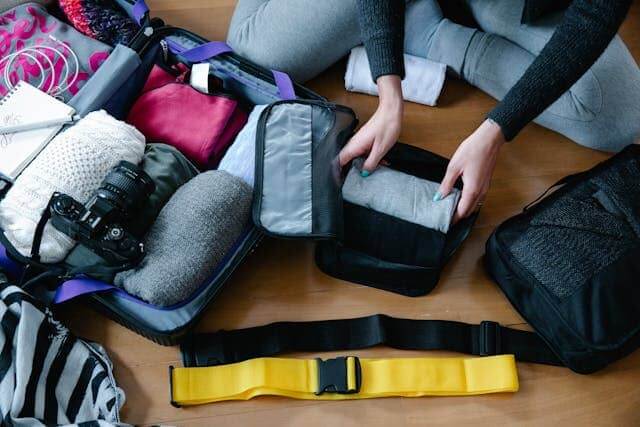
Compression packing cubes remain a favorite among frequent travelers who want to maximize luggage space while keeping clothes organized.
The newest versions use ultra-light ripstop fabric, dual-zip compression technology, and breathable mesh windows.
They’re especially popular with carry-on travelers trying to avoid checked baggage fees, and they work extremely well in bundles.
Pros
- Low Cost, High Margin: Cheap to source and easy to bundle into sets.
- Lightweight & Travel-Friendly: No risk of damage, very low return rate.
- Broad Appeal: Suitable for weekend travelers, backpackers, and business travelers.
- Great for Bundling: Combine with travel bottles, shoe bags, or tech organizers.
- TikTok/Instagram Friendly: Extremely visual product, great for demos and UGC.
Cons
- Highly Saturated Market: Many generic versions already exist.
- Quality Differences: Weak zippers or thin fabric lead to customer complaints.
- Branding Needed for Differentiation: Custom labels help build trust.
Earning Potential
Retail sets typically sell for $20–$45 depending on the number of pieces and compression strength. Wholesale prices range from $4–$12, offering margins of 40%–60%. Bundled sets (6–8 pieces) often deliver the best profitability.
Dropshipping is a lucrative industry, with global revenue projected to grow significantly in the coming years. If you’re looking to carve out a niche, travel products offer a fantastic opportunity due to the increasing number of people traveling worldwide.
4. TSA-Approved Travel Bottles & Leak-Proof Containers

Travel bottles are a small but essential item for modern travelers, especially those who prefer carrying their own skincare, toiletries, or liquids in compliant, spill-proof containers.
The newest variants use silicone squeeze bottles, wide-mouth openings, and leak-proof twist caps, making them practical and durable.
In 2026, refillable and eco-friendly travel containers are trending due to sustainability concerns and rising prices of pre-packaged travel-size products.
Pros
- Universal Demand: Suitable for all types of travelers—budget, luxury, business, etc.
- Very Low Returns: Silicone and plastic containers rarely break or malfunction.
- Lightweight & Low Cost: Perfect for dropshipping due to minimal shipping fees.
- Bundling Potential: Often bought in sets; easy to upsell alongside toiletry bags or packing cubes.
- Eco-Friendly Angle: Refillable options appeal to sustainability-focused shoppers.
Cons
- Highly Competitive Category: Many similar designs; differentiation depends on quality.
- Small AOV: Works best when sold as part of a bundle, not standalone.
- Quality Control Needed: Cheap caps and seals may leak under pressure.
Earning Potential
Retail pricing ranges from $10–$25 for sets of 3–6 bottles. Wholesale costs can be as low as $1.50–$6, enabling margins of 40%–60%, especially with bundled toiletry kits or premium silicone sets.
5. Ergonomic Travel Pillows (Memory Foam, Inflatable & Supportive Designs)
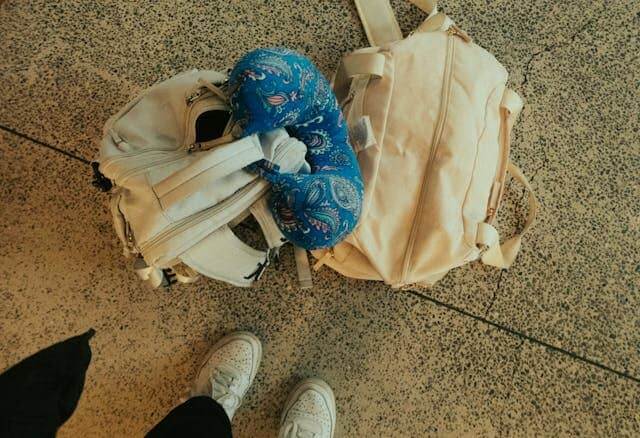
Travel pillows continue evolving with new ergonomic shapes designed to prevent neck strain on long flights.
The best sellers are 360-degree support pillows, compact inflatable pillows, and adjustable memory foam models that compress into small travel bags.
These products appeal to both occasional vacationers and frequent business travelers who prioritize comfort.
Pros
- Strong Travel Niche Appeal: Perfect for long flights, train rides, buses, and road trips.
- High Perceived Comfort: Memory foam and ergonomic shapes justify higher pricing.
- Lightweight & Compressible: Easy to store, ship, and package attractively.
- Great for Gifting: Often bought as thoughtful travel gifts.
Cons
- Bulky for Budget Shipping: Memory foam models take up space unless compressed well.
- Inconsistent Quality: Cheaper foam loses shape quickly.
- Seasonal Spikes: Best sales occur during holiday and summer travel seasons.
Earning Potential
Most travel pillows retail between $20–$40, while premium ergonomic models can go up to $60. Wholesale pricing ranges from $6–$18, allowing margins of 30%–50%, with even higher margins for branded or bundle-based listings.

With lost luggage incidents increasing globally, smart luggage trackers have exploded in popularity.
These compact devices use Bluetooth, GPS, or ultra-wideband (UWB) technology to help travelers monitor their bags through mobile apps.
Affordable alternatives to AirTag are especially attractive for dropshipping because they’re lightweight and useful for backpacks, checked luggage, and even wallets.
Pros
- Rising Demand: Travelers want peace of mind after airline delays and mishandled bags.
- High-Tech Appeal: Easy to market through social media demos and short videos.
- Low Shipping Costs: Compact and lightweight with minimal risk of damage.
- Strong Value Perception: “Smart” products command a higher price compared to their size.
- Recurring Buyers: Customers may buy multiple units for different bags.
Cons
- Quality Variability: Cheap versions may have weak battery life or poor tracking accuracy.
- App Dependency: Some models require apps that may have mixed reviews.
- Competition: Many new brands entering the space.
Earning Potential
Smart trackers typically sell for $20–$50, depending on tracking range and features. Wholesale prices range from $4–$12, enabling 40%–65% margins, especially when sold in 2-pack or 4-pack bundles.
7. Foldable Travel Kettles & Mini Travel Appliances
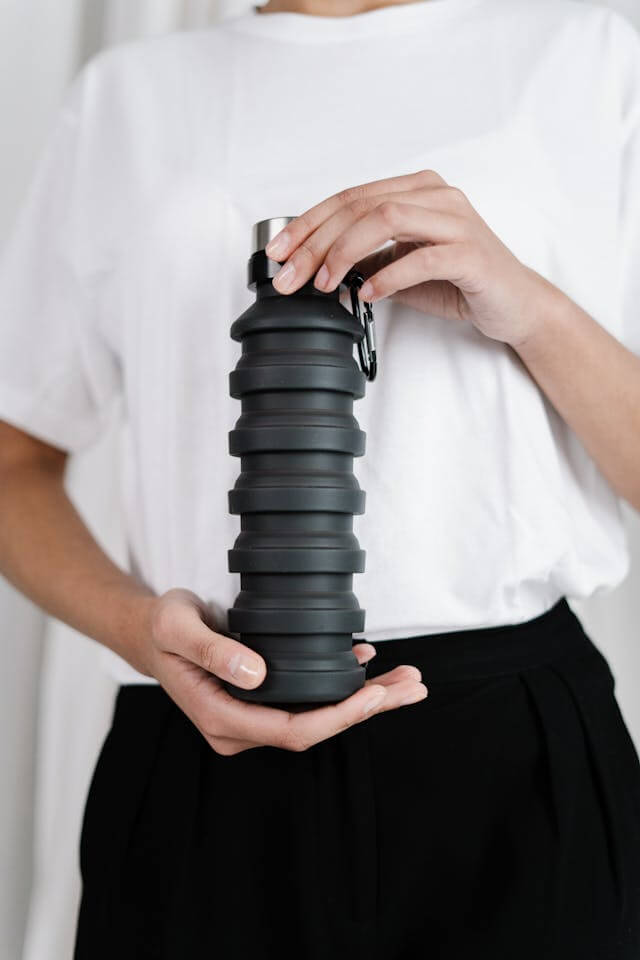
Foldable travel kettles and compact appliances like portable coffee makers, mini steamers, and collapsible electric kettles are quickly becoming favorite items among frequent travelers.
Their ability to boil water, brew coffee, or heat liquids on the go is a huge plus for digital nomads, hostel travelers, and anyone concerned about hygiene while abroad.
The silicone foldable kettles are especially popular because they collapse flat, weigh little, and pack neatly into any carry-on.
Pros
- High Practical Value: Perfect for travelers who need hot water for tea, coffee, baby formula, or instant meals.
- Good Margins on Premium Variants: Temperature control, dual-voltage, and rapid-boil models allow higher pricing.
- Growing International Demand: Particularly strong in hostel and budget travel communities.
- Great Product Storytelling: Easy to demonstrate through short videos, lifestyle content, and UGC.
Cons
- Higher Return Risk: Electrical components can malfunction if sourced from low-quality suppliers.
- Bulkier Than Other Travel Items: Slightly higher shipping costs due to weight.
- Country Voltage Differences: Important to ensure compatibility (110V/220V dual-voltage).
Earning Potential
Retail prices range from $25–$60, depending on features. Wholesale prices typically fall between $10–$25, offering margins of 30%–45%. Dual-voltage or rapid-boil models can command even higher prices, especially when promoted to digital nomads and international travelers.
8. Compression Flight Socks (Anti-Swelling & Circulation-Boosting)
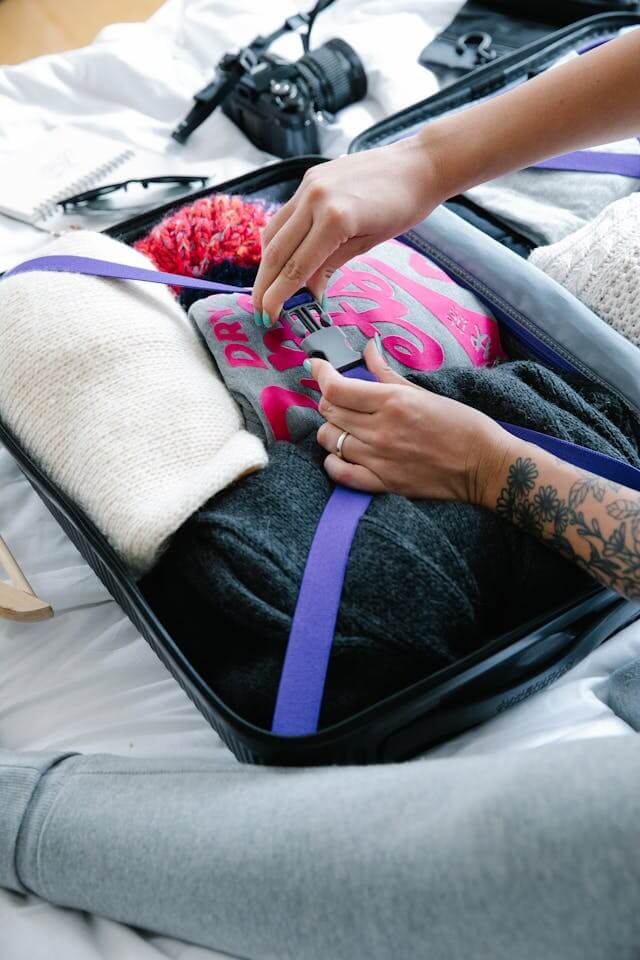
Compression socks have become mainstream among travelers due to growing awareness of circulation issues during long flights.
They help reduce swelling, minimize discomfort, and provide additional support during extended travel.
In 2026, trendy styles, including minimalist designs, athletic compression socks, and breathable medical-grade variants, are rising in popularity, making this a great niche with strong repeat purchase behavior.
Pros
- Health-focused Trend: Increasing awareness of blood circulation issues during long flights.
- Lightweight & Easy to Ship: Very low fulfillment cost and minimal risk of damage.
- High Repeat Purchases: Customers often buy multiple pairs in different designs.
- Niche + Practical: Appeals to business travelers, seniors, pregnant women, and frequent flyers.
Cons
- Sizing Accuracy Needed: Incorrect sizes lead to returns or discomfort complaints.
- Quality Variability: Cheap elastic can wear out quickly or feel too tight.
- Competitive Market: Many generic brands—design and comfort differentiate products.
Earning Potential
Compression socks typically retail for $12–$30 per pair, depending on quality and fabric.
Wholesale pricing ranges from $2–$8, leaving potential margins of 40%–65%. Multipacks (2–4 pairs) significantly boost average order value.
9. Noise-Canceling Earplugs & Mini White Noise Devices
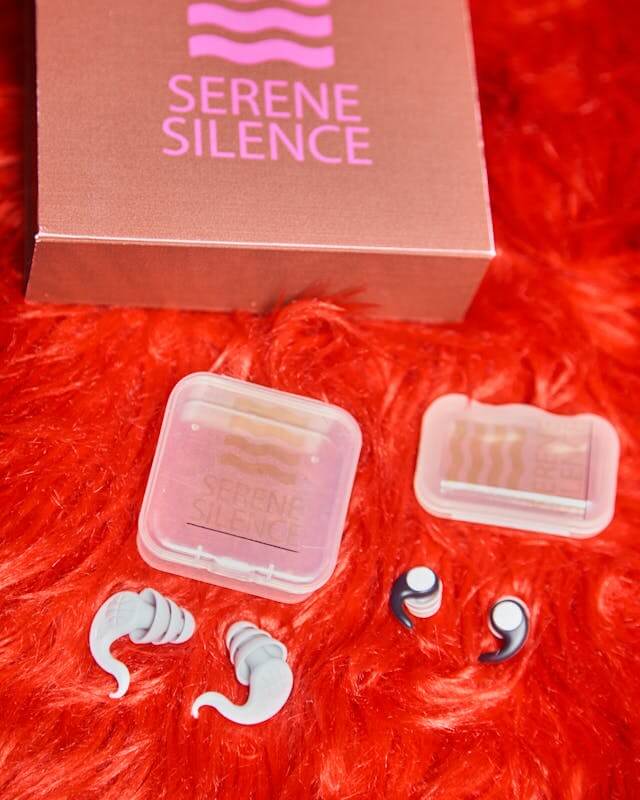
Sound-blocking travel accessories are trending due to increased awareness of sleep health and comfort during flights, hotel stays, and shared accommodations.
Moldable silicone earplugs, reusable noise-reduction plugs, and compact white noise machines help travelers sleep better in unfamiliar or noisy environments.
These products appeal to both frequent travelers and light sleepers, making them versatile beyond just travel.
Pros
- High Demand Year-Round: Not limited to travel; appeals to students, office workers, and sleepers.
- Very Cheap to Ship: Small size = minimal fulfillment costs.
- Low Return Rate: Simple design with few failure points.
- TikTok-Friendly: Earplug demonstrations often go viral for ASMR and sleep content.
Cons
- Small Ticket Item: Earplugs alone have low AOV unless bundled.
- Variable Noise Reduction Quality: Cheaper versions may not meet advertised decibel ratings.
- Regulation Requirements: Some regions have safety standards for hearing protection.
Earning Potential
Noise-canceling earplugs retail for $10–$25 per pair, while portable white noise machines retail for $20–$40. Wholesale costs range from $1–$5 for earplugs and $6–$12 for white noise devices, enabling margins of 40%–60%.
10. Travel Shoe Bags & Odor-Control Pouches

Travel shoe bags have become a go-to item for travelers who want to keep dirty or odor-prone shoes separate from clean clothes.
Newer designs include water-resistant materials, dual-compartment bags, and breathable mesh sections that reduce moisture buildup.
Odor-control pouches, often infused with activated charcoal, pair naturally with these bags, making them a strong bundle option.
Pros
- Genuinely Useful: Prevents dirt, odor, and bacteria from spreading inside luggage.
- Low Cost, High Margin: Lightweight and inexpensive to source.
- Aesthetic Upgrades: Modern colors and minimalist designs appeal to younger travelers.
- Perfect for Bundles: Combine with packing cubes or toiletry bags to increase AOV.
Cons
- Low Standalone AOV: Works best as part of a travel organization kit.
- Quality Variability: Cheap fabrics tear easily or lack ventilation.
- Competitive Space: Many generic options; custom branding helps differentiate.
Earning Potential
Travel shoe bags usually retail for $10–$25, and odor-control pouches for $8–$15. Wholesale pricing ranges from $1.50–$6, offering strong margins of 40%–60%. Selling them as bundled 2-packs or included in a travel organization kit significantly increases profitability.
11. Compact Travel Hair Tools (Dual-Voltage Mini Straighteners & Dryers)
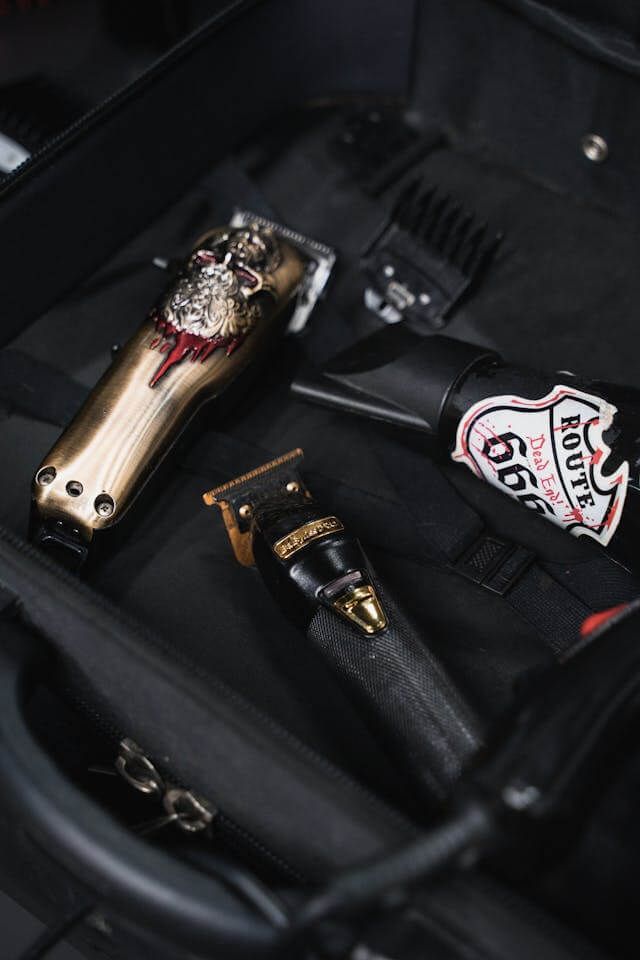
Compact hair tools are a powerful category because they solve a real problem: hotel dryers and irons are unreliable, bulky, or damaging.
The newest models are dual-voltage, foldable, and ionic or ceramic, ensuring lower heat damage and better results for travelers.
These tools appeal strongly to female travelers, digital nomads, and anyone attending events, photoshoots, or business trips.
Pros
- High Perceived Value: Customers are willing to pay premium prices for reliable styling tools.
- Solves a Clear Pain Point: Travelers need compact, safe, and powerful alternatives.
- Premium Variants Available: Ceramic plates, ionic airflow, and fast-heating models drive higher margins.
- Year-Round Sales: Not seasonal like some travel accessories.
Cons
- Higher QC Requirements: Heating tools must meet safety standards to avoid malfunctions.
- Slightly Heavier for Shipping: Not as lightweight as fabric-based travel products.
- Customer Expectations: Users expect salon-quality results, so supplier selection is critical.
Earning Potential
Retail prices range from $25–$70 depending on features. Wholesale costs typically fall between $10–$25, giving margins of 30%–45%. Branded or bundled kits (e.g., “mini travel styling set”) push AOV and conversion rates even higher.
12. Portable Door Locks & Travel Safety Gadgets

Travel safety is now a major priority, especially among solo travelers, students, and renters using hostels or Airbnb accommodations.
Portable door locks, door-stop alarms, window locks, and small safety sirens offer peace of mind at a low price point.
These items are compact, lightweight, and extremely easy to demonstrate through video, helping them trend on TikTok and Instagram.
Pros
- Exploding Demand: Safety-focused travel products have surged since 2023.
- Lightweight & Cheap to Ship: Most items fit in a small padded envelope.
- Strong TikTok Appeal: Demo videos often go viral.
- Great for Solo Travel Niche: Highly engaged audience with strong purchase intent.
- Low Return Rate: Simple mechanical designs rarely break.
Cons
- Quality Matters: Weak metal or plastic mechanisms can fail under pressure.
- Regulatory Considerations: Must ensure materials meet safety requirements.
- Niche Audience: Highly appealing but not for all travelers.
Earning Potential
Portable door locks and safety tools sell for $10–$30, depending on the device. Wholesale costs are typically $2–$8, giving strong margins of 40%–65%. Bundling options, like “Solo Travel Safety Kits” can raise AOV and build niche authority.
13. Travel Laundry Kits (Portable Wash Bags, Detergent Sheets & Clotheslines)
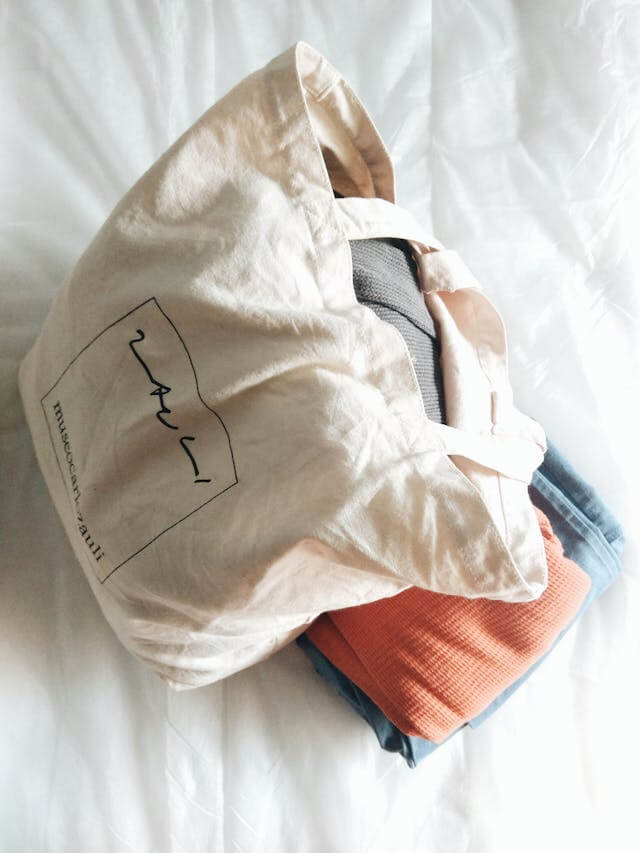
Travel laundry kits are becoming increasingly popular as travelers try to pack lighter and avoid hotel laundry fees. These kits typically include portable wash bags, ultra-thin detergent sheets, compact clotheslines, and wrinkle-release sprays.
They’re especially useful for backpackers, long-term travelers, and digital nomads staying in Airbnbs or hostels.
The new versions focus on sustainability, biodegradable detergent sheets and water-saving wash bags.
Pros
- Highly Practical: Enables travelers to wash clothes anywhere, anytime.
- Lightweight & Compact: Extremely dropshipper-friendly and inexpensive to ship.
- Great for Bundles: Can be sold as part of travel organization or eco-friendly travel kits.
- Appeals to Budget Travelers: Saves money on hotel laundry services.
Cons
- Niche Product: Appeals mostly to long-term or minimalist travelers.
- Quality Concerns: Cheap wash bags may leak or tear.
- Variation Needed: A standalone wash bag has lower AOV unless bundled.
Earning Potential
Travel laundry kits typically retail for $15–$35 depending on components. Wholesale prices range from $3–$10, giving margins of 40%–60%. Full kits (wash bag + detergent sheets + clothesline) deliver the best profitability.
14. LED Travel Makeup Mirrors (Foldable & Rechargeable)
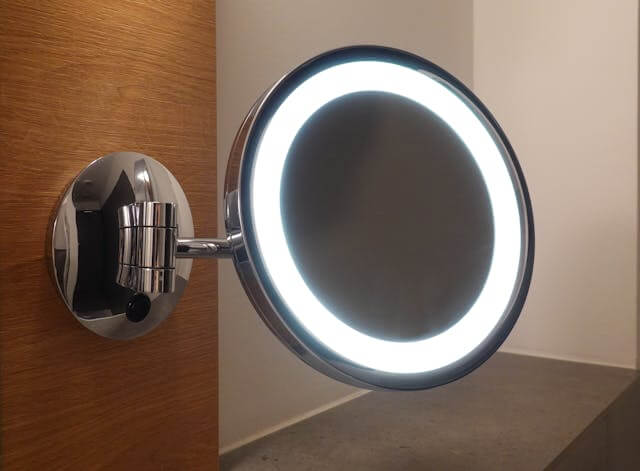
LED travel makeup mirrors are a trending item in 2025 thanks to social media, beauty influencers, and the rise of remote work on the go.
These compact mirrors often feature adjustable LED lighting, touch controls, rechargeable batteries, and foldable stands, making them perfect for makeup application in dim hotel rooms or during travel.
They appeal strongly to female travelers, content creators, and beauty enthusiasts.
Pros
- High Perceived Value: LED lighting and premium materials create a luxury feel.
- Strong Beauty Niche Appeal: Ideal for travel, everyday use, and desk setups.
- Lightweight & Giftable: Popular as birthday, holiday, and bridesmaid gifts.
- UGC-Friendly: Easy to promote through beauty videos and influencer content.
Cons
- Fragile if Poor Quality: Hinges, LEDs, or mirrors can break during shipping.
- Battery Variation: Cheap models have weak lighting or slow charging.
- Moderate Shipping Considerations: Needs protective packaging.
Earning Potential
Retail pricing ranges from $20–$45, depending on LED quality and features.
Wholesale costs typically fall between $6–$15, offering margins of 35%–55%. Two-in-one mirror cases or premium finishes (rose gold, matte black) increase AOV.
15. Travel Tech Organizers & Cable Kits

Travel tech organizers remain a high-demand product thanks to the rise of digital nomads and remote workers.
These organizers help travelers store charging cables, earbuds, power banks, adapters, and SD cards neatly in one compact pouch.
Modern 2026 versions include water-resistant outer shells, elastic cable loops, dedicated electronics compartments, and minimalist designs that appeal to younger audiences.
Pros
- Universal Need: Almost every traveler carries multiple tech accessories.
- Great for Bundling: Works perfectly with power banks, adapters, and portable chargers.
- Low Return Risk: Simple construction with minimal failure points.
- Stylish & Customizable: Easy to brand with logos or unique colorways.
- Appeals to Digital Nomads: A dedicated, growing niche.
Cons
- Highly Competitive: Many inexpensive generic models exist.
- Fabric Quality Varies: Cheap zippers or flimsy compartments frustrate customers.
- AOV Depends on Size: Small organizers have limited pricing power unless upgraded.
Earning Potential
Travel tech organizers retail for $15–$35, depending on compartments and materials. Wholesale pricing ranges from $3–$10, enabling 40%–60% margins. Pairing them with chargers or cable sets significantly boosts AOV and conversions.
10 Tips to Find Trending Products in 2026
Finding trending travel products in 2026 isn’t about guessing, it’s about using the right tools, analyzing real behavior, and spotting patterns before everyone else.
The travel market is evolving quickly, driven by rising tourism, digital nomads, and a growing demand for convenience-driven travel gear.
Here’s how you can consistently spot winning items:
1. Use Google Trends to Spot Rising Search Demand
Google Trends is one of the best free tools to track demand spikes in real time.
Search for terms like “travel organizer,” “smart luggage,” “portable kettle,” or “compression socks” and look for:
- upward 12-month search trends
- seasonal peaks
- rising related queries
- break-out keywords
If you see searches climbing steadily, that’s your signal to source the product early.
2. Analyze Competitor Traffic With SimilarWeb
Use SimilarWeb to understand what top travel brands are selling and which product categories drive the most traffic. This is especially useful for:
- identifying product pages that are trending
- checking which marketing channels competitors are using
- spotting categories with sudden traffic spikes
If a competitor’s traffic jumps after launching a new category (e.g., smart trackers), that’s a strong market signal.

TikTok, Instagram, and YouTube have become major drivers of travel product trends. Look for:
- “TikTok made me buy it”-style travel gear
- viral UGC around airport hacks, packing hacks, or flight must-haves
- what creators pack in “travel essentials” videos
- comments asking where to buy certain items
Products like packing cubes, shoe bags, and portable appliances often take off after going viral.
4. Use Amazon Best Sellers to Validate High Demand
Amazon’s Travel Accessories category gives you direct insight into top performers. Pay attention to:
- Best-selling travel tech (power banks, trackers)
- Growing categories (sustainable products, eco travel kits)
- New arrivals with fast rising ranks
- Consistency – items staying in the top 50 for weeks
Cross-check the reviews to identify pain points you can solve with better sourcing.
5. Check Supplier Platforms for Emerging Listings
Alibaba, Global Sources, and Made-in-China often show trending travel products before they hit mainstream retail.
Things to look for:
- products newly launched in the last 6 months
- items with high MOQ inquiries
- supplier notes like “hot sale,” “2026 new model,” or “exporting to EU/US”
- sample test reports and qualification certifications
Pair supplier data with customer reviews to ensure quality before dropshipping.
6. Look for Behavior Shifts Among Travelers
Travel behaviors predict product trends. In 2026, travelers are becoming:
- more eco-conscious → sustainable, reusable, recycled travel gear
- more tech-heavy → smart luggage, GPS trackers, multi-port chargers
- more minimalist → compact organizers, foldables, compression items
- more safety-focused → portable door locks, anti-theft bags
- more comfort-driven → ergonomic pillows, noise blockers
If traveler behavior changes, product demand changes with it.
7. Use Survey Tools Like SurveyMonkey to Validate Ideas
Want deeper insight? Run quick surveys asking people:
- what they struggle with when packing
- which products they wish existed
- what makes travel stressful
- what they last purchased for a trip
Even 20–40 responses can highlight gaps in the market.
8. Track Airline & Tourism Data for Seasonal Peaks
Tourism spikes (summer, holiday seasons, spring break, Ramadan travel, festival seasons) directly correlate with higher sales of:
- luggage and organizers
- comfort items for long flights
- safety accessories
- personal care travel kits
Watch UN Tourism and local tourism boards for upcoming travel waves.
9. Follow Product Innovations by Big Brands
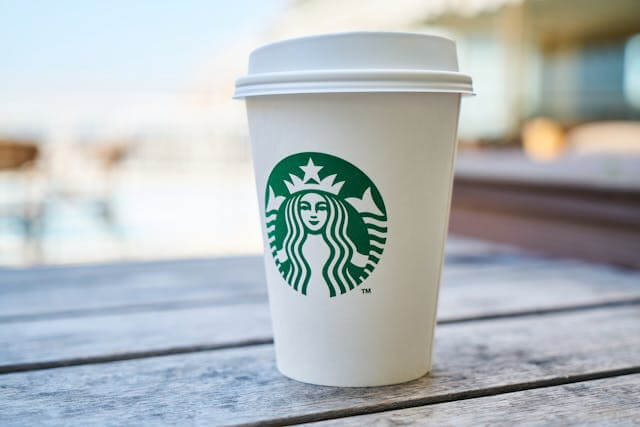
Brands like Samsonite, Tumi, Swiss Military, and Go Travel often launch new technology before it becomes mainstream. For example:
- aluminum trolleys and 8-wheel designs launched in 2024
- anti-microbial fabrics in new organizational kits
- recycled material luggage (Samsonite’s Recyclex)
If big brands invest in a feature, smaller suppliers usually follow, giving you a chance to source similar items early.
10. Use Customer Feedback to Identify Pain Points
Read comments and reviews on Amazon, TikTok, Walmart, and competitor websites. Look for phrases like:
- “Wish it was more compact”
- “Doesn’t fit in carry-on”
- “Leaks easily”
- “Battery dies too fast”
These complaints help you source improved versions with higher perceived value.
Dropshipping Travel Products FAQs
Can You Dropship Travel Products?
Yes, you can dropship travel products, and it can be a highly profitable niche with the right approach.
The travel industry is vast and constantly evolving, with millions of people traveling for business, leisure, and adventure every year.
This consistent demand creates a lucrative market for travel-related products. From travel accessories to portable gadgets, there are numerous products that cater to the needs of travelers.
How to Start Dropshipping Travel Products?
Like any business venture, it’s essential to know the basic steps to start dropshipping travel products.
Whether you’re a beginner or a veteran in this industry, here are the steps you need to take to become a travel product dropshipper:
Choose a Sub-Niche, or Not
We’ve already established how huge the travel product niche is. So at this point, you need to decide if you’re going for a specific sub-niche or staying a generalist.
By staying a generalist, you’re looking at evergreen products that are in-demand all year round. On the other hand, going for a specific sub-niche lets you focus on a target market and narrows down the competition.
While you’re allowed to change your decision in the future, establishing your reputation will help gather loyal customers.
Find Reliable Dropshipping Suppliers
Selling the right products should go hand-in-hand with having reliable suppliers.
Product quality is a massive deal-breaker for consumers, making it necessary for you to find trusted suppliers. You should also consider shipping times as a lot of customers prefer receiving their products immediately.
Before you add products to your website, do a background check on your suppliers.
Prepare Your Online Store
Now that you have products and suppliers in mind, it’s time to build your online store.
Keep it aligned with the products you’ll sell and make it user-friendly. Nothing beats an online store that’s easy to navigate and understand.
How to Choose Travel Products to Dropship?
Product research is an essential step to starting a dropshipping business.
As mentioned, you first have to decide whether you will go for general travel products or focus on a sub-niche.
Once you’ve made your decision, here are a few tips to help you choose what travel products to dropship:
Choose Popular Products
Opting to sell popular products introduces a particular risk. But with high risk comes high rewards.
Popular products already have a target market. The only challenge you need to overcome is reaching these customers and making sales. With that, consider your current competitors and see how you fare against them.
If you’re currently making substantial sales, then selling trendy products will only bring you tons of profit.
Check the Profit Margin
Get your calculator and start computing for the profit you’ll gain from each product sold. Then, consider all expenses and see if the amount you’ll invest will be returned.
This tip is also a great time to consider the amount of effort needed to make a sale. If both monetary and intangible investments seem profitable, then add that to your store.
Where to Find Travel Products for Dropshipping?
One of the most reliable places to find travel products is AliExpress. It has thousands of products across, especially for the travel niche.
To make product research easy for you, use the AliExpress Dropshipping Center. You’ll get access to information like sales and supplier reviews, which are both beneficial for your business.
Summing Up: Finding Travel Products to Dropship
Dropshipping travel products offers a unique opportunity to tap into the growing market of travel enthusiasts.
This business model can be highly profitable due to the emotional appeal of travel-related products. Plus, the market will always have a demand for travel essentials.
This is one of the main reasons why travel products will remain a profitable niche. But, of course, you still need to find relevant ones and trusted suppliers.
The list of products above should guide you on which products to sell.
However, if you need someone who can let you connect with the suppliers of the travel products you have in mind, request a sourcing quote from us at NicheDropshipping to find reliable ones in the market.
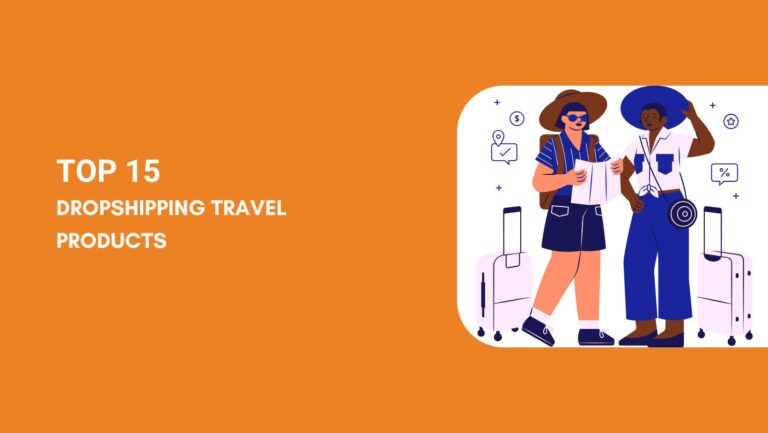

I would like to know a good supplier of 60L Backpacks
Hi Sergio,
thanks for your interest. The link to our contact page is https://nichedropshipping.com/niche-dropshipping/. Alternatively, our contact email is [email protected]. Looking forward to your message.
Hello I would like to find a reliable luggage supplier that ships product out 1 to 2 business days because if it’s coming from overseas that will help it get to the customer faster